In recent years, the leather and footwear industry of Uzbekistan has shown steady growth rates. The Presidential Decree "On Additional Measures for the Further Development of the Leather, Footwear and Fur Industries" gives an additional impetus to the development of the industry.
Capacity building trajectory
The leather and footwear industry is one of the promising areas for the development of Uzbekistan's economy. In recent years, serious attention has been paid to the development of this industry, tax incentives and preferences were provided to manufacturers, conditions were created for the formation of a raw material base and support was provided in conducting export activities. As a result, the industry developed dynamically during 2017-2020 and even during the pandemic did not lose its acquired positions, continuing to build up its potential.
According to the Uzcharmsanoat association, which includes most of the industry's enterprises, the average increased by almost 19%. The production of footwear during 4 years increased 10.4 times, from 10.2 million pairs in 2016 to 105.8 million pairs in 2020. Remarkably, the production of leather of the second and third stages is actively increasing, while the output of leather of the first stage in the form of final products has been declining after 2018. This indicates that the domestic leather industry is increasingly moving to the production of more complex products, which creates additional opportunities for manufacturers of finished leather products.
The leather and footwear industry of Uzbekistan is attractive for business, as evidenced by the increase in the number of enterprises and the increased level of investment activity in recent years. So, if in 2016 the number of enterprises in the Uzcharmsanoat Association was 83, then by the end of 2020 was more than 560 units. Also, according to the association, the volume of attracted investments in the industry has increased 3.9 times over four years. In 2020, despite the difficulties caused by the pandemic, about $ 190 million was spent, including foreign direct investment for more than $60 million, which is 30 times more than in 2016. The main benefit of the fast pace of this industry for the domestic economy is the number of people employed in the industry increased by 5.4 times - from 2.2 thousand in 2016 to 11.6 thousand in 2020. According to the State Statistics Committee of the Republic of Uzbekistan, the volume of exports of footwear products in 2017-2020 increased 3 times and reached $ 37 million.
Despite the pandemic, the industry continued to actively increase exports of high value-added products in 2020. In particular, according to the State Statistics Committee of the Republic of Uzbekistan, the export of footwear increased by 17.1% over the year. The impressive dynamics of the export of footwear is noted in neighbouring countries. For example, exports to Afghanistan increased 4 times, Tajikistan - 3.4 times, Kazakhstan - 2.2 times. Also, despite all the restrictions imposed in connection with the coronavirus, it was possible to expand the geography of exports. Currently, domestic footwear products are supplied to 14 countries, including the USA, Latvia, Moldova, the United Arab Emirates, Kuwait, Singapore.
Thus, the development of the leather and footwear industry over the past four years has proved the existence of a sufficiently powerful potential for the development of its production and export. In his Address to the Oliy Majlis, the President noted that the leather and footwear industry, along with others, has all the conditions to become one of the drivers of the national economy.
Additional incentives for development
While the industry is successfully and dynamically developing, additional measures of state support can give an even greater incentive to the development and increase in production and sales of products. To maintain the momentum of development and facilitate further development of the industry's potential, a presidential decree was adopted in February this year. This decree includes additional benefits for manufacturers, measures aimed at increasing sales of leather and footwear products in the domestic and foreign markets and introducing international standards in the production of leather and footwear products.
In particular, a zero rate of customs duties is established for the import of fur raw materials, production of finished leather and fur products. The zero rates will be valid until January 1, 2023. Besides, manufacturers have been allowed to obtain preferential loans for the purchase of modern new equipment and technologies. New support measures will allow domestic producers to reduce production costs, which will increase the competitiveness of their products in the domestic and foreign markets.
One of the main aspects of the adopted resolution is the formation of additional opportunities for manufacturers to increase sales and increase demand for domestic goods. It would be appropriate to say here that, despite the impressive dynamics of growth in the export of footwear in recent years, problems such as the weak level of marketing and the lack of awareness of domestic footwear brands remain. There are cases when domestic footwear, which is not inferior in quality to foreign ones, is sold in the domestic market as made in Turkey, China and other countries.
To support domestic brands and increase export volumes, Multibrand stores specialized in the trade of leather products of domestic manufacturers and their electronic trading platforms will be created in all regions of the republic. The stores will be created at the expense of the Leather and Footwear Industry Support and Development Fund. The stores are expected to help popularize domestic footwear products. And their electronic versions will create additional demand. Moreover, the pandemic has demonstrated the shift in clothing and footwear sales in favour of the electronic format.
Also, to facilitate the sale of domestic finished products (not only leather and footwear but also textile, electrical, etc.) to external consumers on an experimental basis, outlets for the sale of finished products will be created on the segments from border checkpoints to the border with neighboring states. At the moment, such points will be created in the Tashkent and Surkhandarya regions. If this practice turns out to be successful, then later it will be extended to other border points of the republic.
Future goals
Thus, over the past years, the leather and footwear industry has strengthened enough, the manufactured products have become relatively competitive, the necessary basis has been laid for further strengthening the country's comparative advantages in the field of leather and footwear production. In the long term, the industry is expected to continue its dynamic development. In particular, in 2021, the Uzcharmsanoat Association plans to increase the production of footwear to 115 million pairs, leather goods to 102 billion sums, leather goods to 1.6 billion square meters. In the medium term, per the approved forecast indicators, by 2025 the industry will increase production to $ 2.3 billion and exports to $ 1.5 billion.
Country / sector
Ruslan Abaturov, Center for Economic Research and Reform
"Economic review" journal №2 (252) 2021

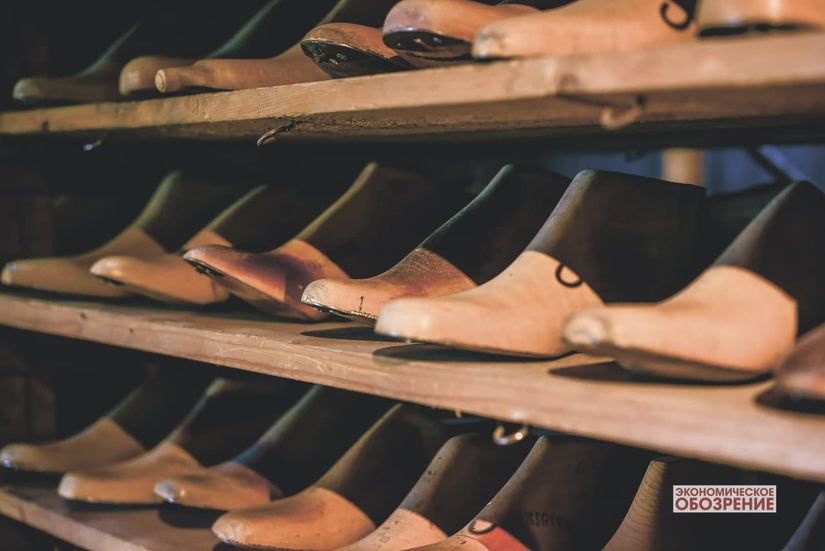

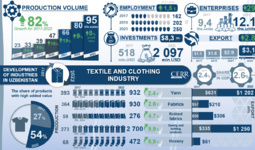
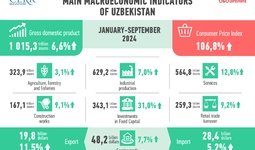
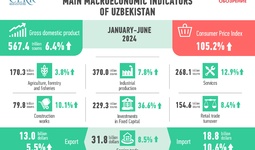
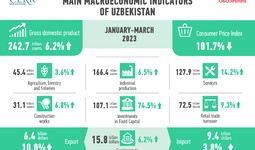
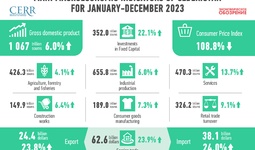













leave a comment